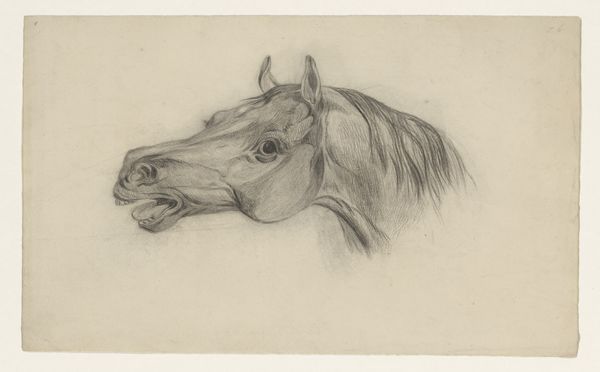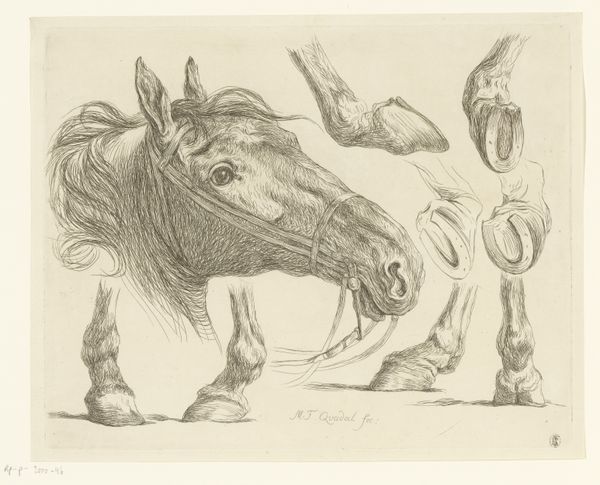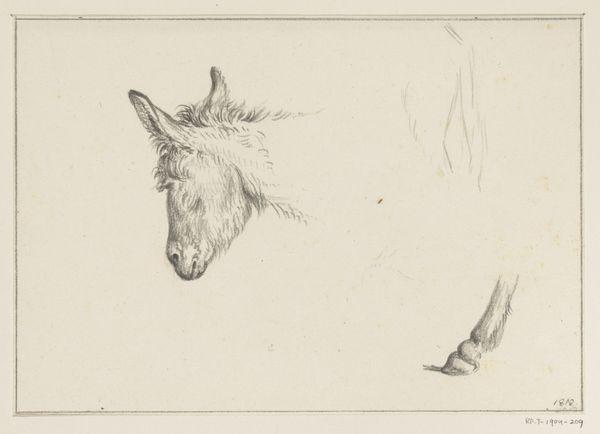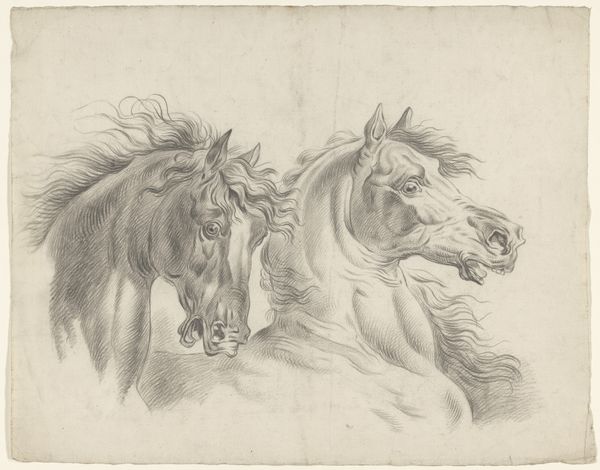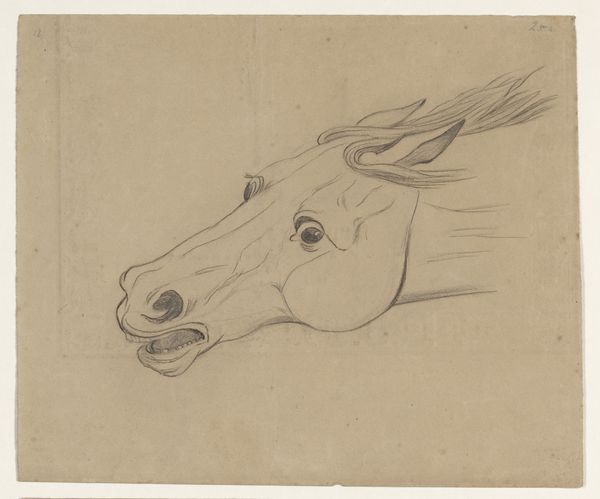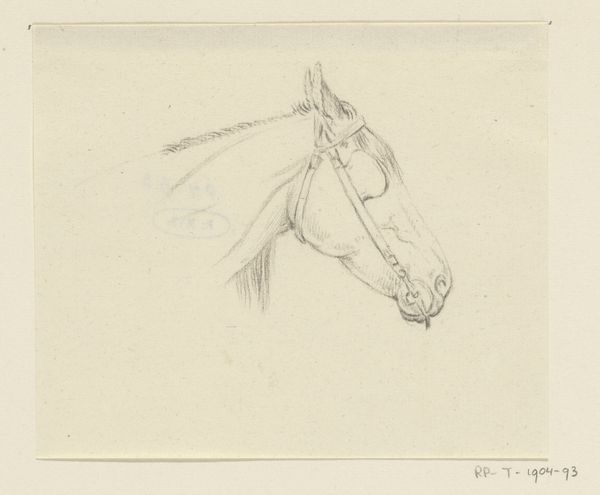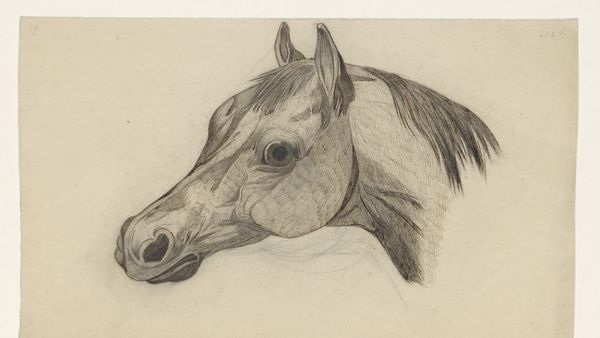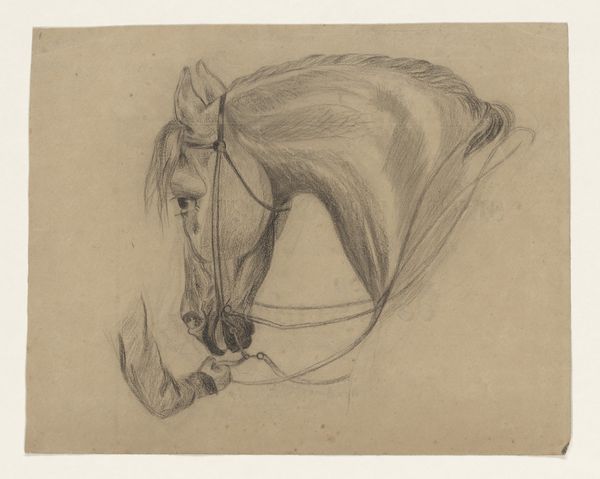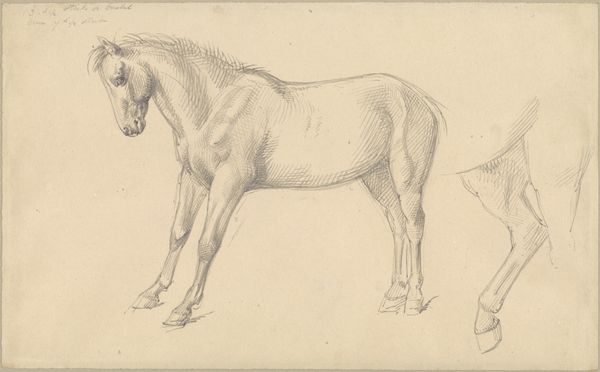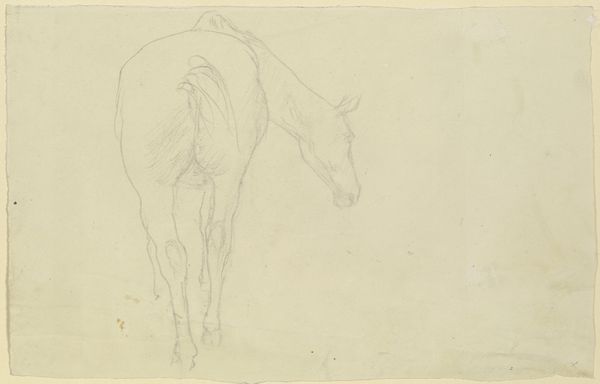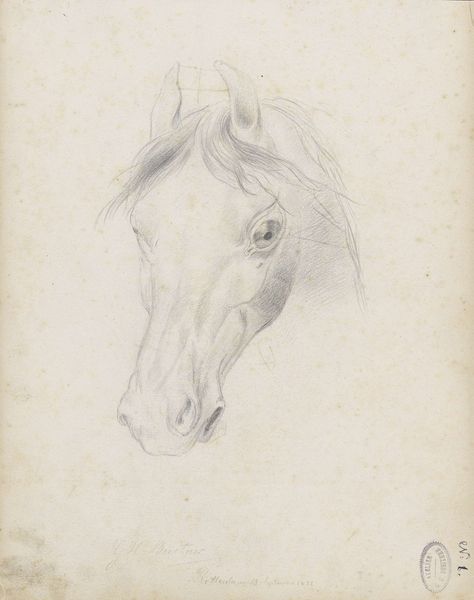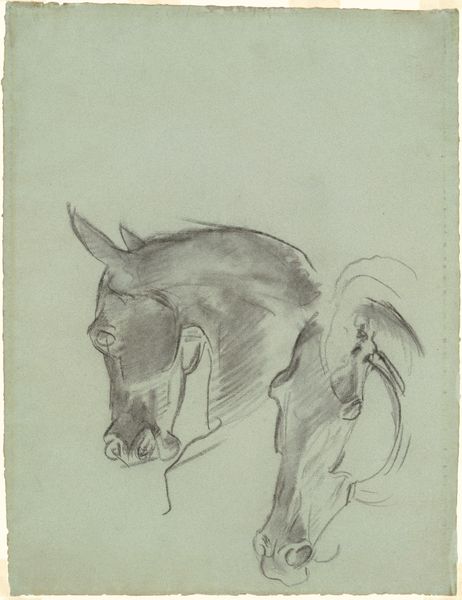
drawing, paper, dry-media, pencil, chalk, charcoal
#
portrait
#
drawing
#
charcoal drawing
#
paper
#
dry-media
#
pencil drawing
#
pencil
#
chalk
#
charcoal
Copyright: Public Domain
Editor: Here we have “Head of a Horse and a Foal Facing Left,” a drawing of unknown date by Teutwart Schmitson. It's rendered in pencil, chalk, and charcoal on paper. The composition feels almost like a study, focusing on the details of the animals’ heads. What can you tell me about it? Curator: Notice first the selection of materials – humble, accessible. Charcoal, chalk, pencil: these are the tools of practice, of learning a craft. Schmitson isn't necessarily aiming for a polished, "finished" work. Instead, the focus is on the process of observation and capturing form. Editor: So, it's about the labor and skill of the artist rather than the inherent value of the materials? Curator: Precisely. Consider the economic context. Access to expensive pigments and supports was limited. Drawings like these democratized artmaking, using readily available materials to create images, emphasizing skill and process. The rough paper supports that idea as well. It is more important for sketching and easy for everyday consumers to purchase for learning to draw. Editor: That's fascinating! It challenges the traditional idea of art being tied to expensive materials. Curator: Absolutely. The "value" here resides in Schmitson's ability, his engagement with the physical world, and his transformation of these simple materials. How does that impact your viewing experience? Editor: It makes me appreciate the skill and the dedication involved. It shifts the focus away from some inherent preciousness to the hard work of the artist. I see now how something beautiful can be born out of a simple, direct process. Curator: Exactly, and understanding that process gives us a richer understanding of not only the art but the broader cultural forces shaping art production and consumption.
Comments
No comments
Be the first to comment and join the conversation on the ultimate creative platform.
